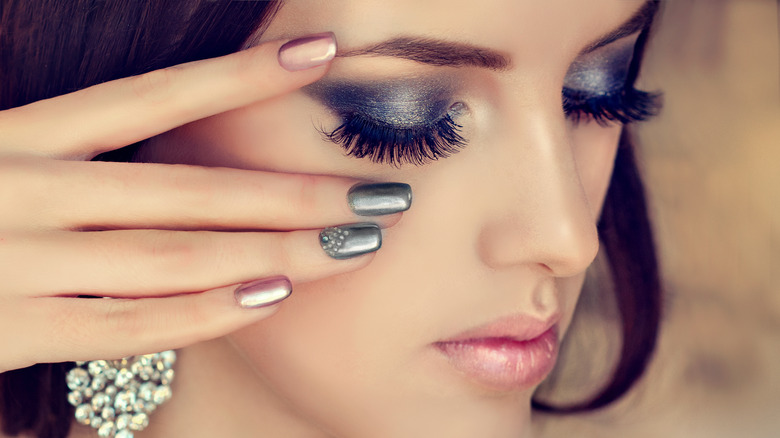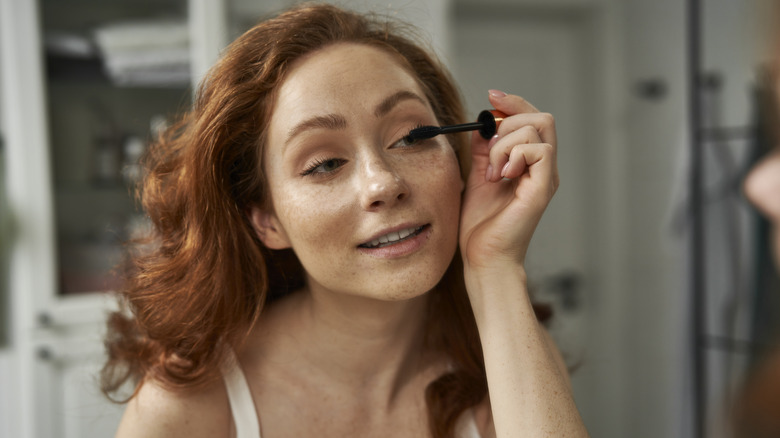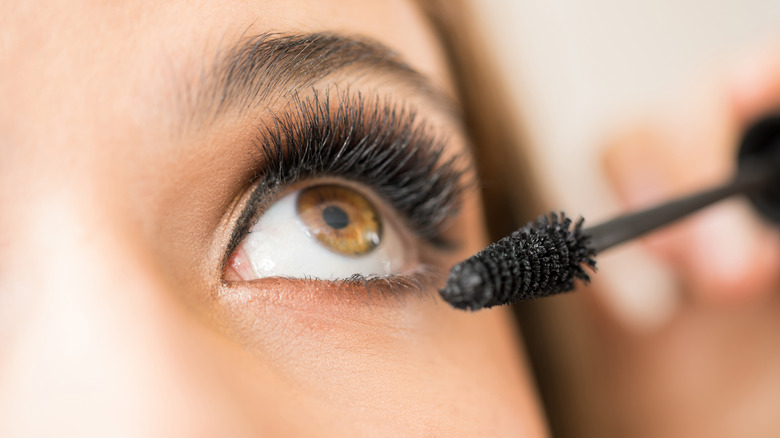What's Fiber Mascara & How Does It Enhance Your Eye Makeup?
Did you know ancient Egypt birthed mascara? Circa 3400 B.C., ancient Egyptians used a concoction of kohl, water, honey, and crocodile feces to deepen their lashes. Fast forward to today, and mascara has become a staple of our makeup routines (with more sanitary ingredients). In fact, the last 100 years of mascara have witnessed the product evolve from the Bésame Cake Mascara of the 1920s to today's funky glitter mascara that makes lashes extra shiny — and beyond
There's not just one type of mascara, though, with our social media feeds being bombarded with talk about an impressive newer type: fiber mascara. This mascara is the latest innovation for those who want fuller, thicker, and longer eyelashes but aren't into falsies. On this, oculoplastic surgeon Dr. Elizabeth Hawkes told Woman & Home, "A fiber mascara is infused with tiny pieces of rayon, silk or nylon fibers within the mascara. The wand will then deposit tiny fibers that stick to the end and sides of your eyelashes to give an impression of longer, thicker lashes. The fibers help lengthen and thicken the lashes." Since these fibers act as extensions, this mascara volumizes your lashes substantially more than traditional mascara.
How to apply fiber mascara like a pro
Applying fiber mascara can be just like regular mascara, or it can be a dual-phase process. On this, makeup artist Courtney Jarrell told Byrdie that "fiber mascaras are very similar to tubing mascaras. Teeny tiny fibers are infused into the formula to bulk the lash, adding length and volume." But the fun doesn't stop there, with Jarrell adding, "Some brands go as far as to have a two-step system where you first apply a coat of mascara, then a dry coat of fluffy fibers, and one more layer of mascara."
Naturally, applying fiber mascara takes some practice to master. The easiest technique is the press-and-roll method, which sees you pressing the tip of the applicator to the back of your lashes (closest to your skin) hard enough to make full contact but light enough that you're not forcibly closing your eye. Start at the outer corner of your eyes and roll the applicator inward to coat all of your lashes. For fuller coverage, roll the applicator back outward. You can also wiggle the wand between your lashes with upward strokes with the tried-and-true wiggle-and-pull technique.
Depending on whether your fiber mascara involves two steps (a primer and the actual mascara) or just one, you'll need to apply multiple coats to ensure the fibers are properly attached to your lashes. Don't apply too much, though, as fiber mascara can clump just like the old faithful in your makeup bag.
Benefits and drawbacks of fiber mascara
Fiber mascara can instantly enhance your eye makeup by giving you fuller, longer, and thicker eyelashes. Even if you go for the natural appeal without eyeshadows, contouring, and eyeliners, fiber mascara alone will elevate your look and make your eyes pop. Plus, fiber mascaras are typically more waterproof than other mascaras, so you don't need to worry about smudges from rain, sweat, and tears.
However, there are some potential drawbacks to keep in mind. Sometimes, the fibers may stick together, so instead of having luscious thick eyelashes, you end up having thick strands of lashes clumped together. Moreover, the fibers might flake and fall off your lashes, leaving you with black blemishes on your cheeks and under your eyes.
One last drawback of fiber mascara is that removing it can be a hassle. Regular mascara can be seamlessly removed using cotton balls and a simple makeup remover solution. However, fiber mascaras require a special makeup remover due to being more waterproof than their counterparts — they will cling to your lashes mightily. Instead, you'll need to source an oil-based remover for easy fiber cleanup at the end of the day.


